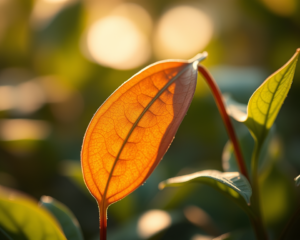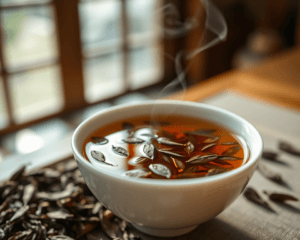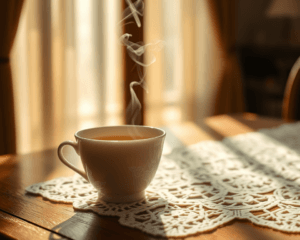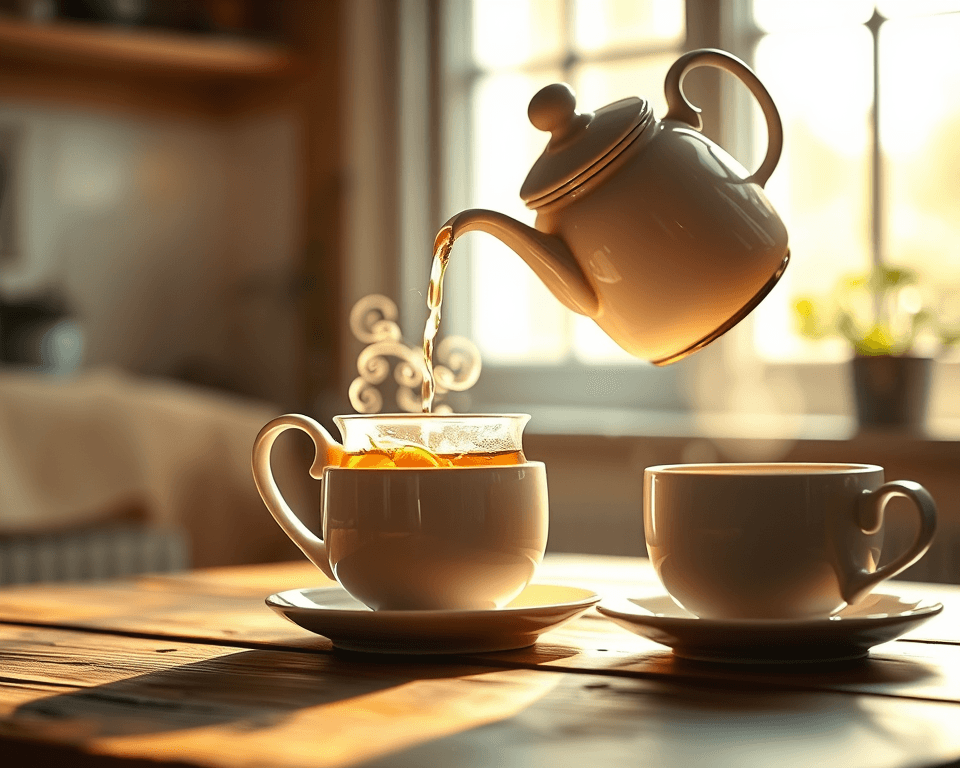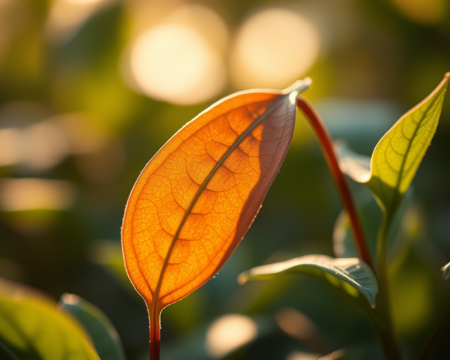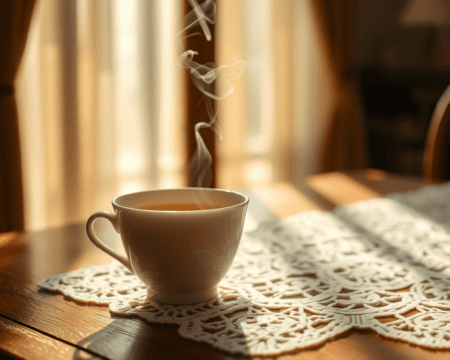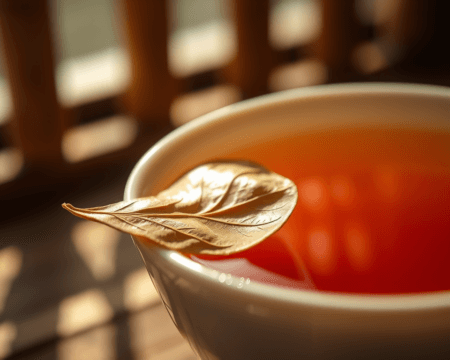There’s something magical about tea—whether it’s that soothing cup in the morning or the delicate experience of sharing a pot with friends. If you haven’t explored the world of tea sachets yet, you’re missing out on a game-changer. Gone are the days when you had to fuss with loose leaf tea and messy brewing. Enter the tea sachet, a simple yet powerful innovation that makes steeping our favorite brews a breeze.
Key Takeaways
- Convenience at Your Fingertips: Tea sachets offer a hassle-free way to enjoy your favorite brews without the mess.
- Taste with Consistency: The design ensures every cup tastes just as good as the last.
- Cultural Richness: Different regions have their unique takes on sachet blends, enhancing the global tea experience.
- Environmental Considerations: It’s essential to know about the materials used in sachets and the environmental impact.
- Quality Matters: Not all tea sachets are created equal—choosing wisely can make a significant difference in your tea-drinking experience.
What is a Tea Sachet?
Definition and Composition
Let’s kick things off by breaking down exactly what a tea sachet is. Picture this: a lightweight, porous bag that’s filled with your favorite tea blend. Unlike traditional tea bags, tea sachets come in various designs, including pyramid shapes that allow for better water flow and extraction. They’re crafted from materials that let the tea breathe, ensuring a rich infusion. With herbal infusions or classic black teas inside, these sachets cater to all taste buds.
When you’re in the mood for a quick pick-me-up, grabbing a sachet is like ordering fast food, but significantly healthier. These sachets typically contain high-quality tea blends, meticulously sourced to ensure flavor consistency. Just boil some water, toss in a sachet, and voilà—you’re set for a delightful moment of tea heaven.
Historical Background
The history of tea sachets is fascinating. The concept dates back to the early 20th century when they were invented more as a novelty than anything else. Tea lovers were transitioning from loose leaves to a more modern brewing experience, and sachets emerged as an interesting solution. Over time, they paved the way for revolutionary brewing advancements. It reflects how tea culture has continuously evolved from intricate brewing setups to simpler, chic experiences.
The evolution of tea packaging truly showcases society’s changing tastes and lifestyle. From the initial innovative use of fabric bags to the sleek designs we see today, tea sachets resonate with modernity, pairing perfectly with our fast-paced lives.
Advantages of Using Tea Sachets
Convenience and Ease of Use
Now, let’s talk about what makes tea sachets a universally loved choice—their convenience. Imagine: you’re rushing to get out the door, but you still crave a quality cup of tea. You can reach for a sachet, pop it in your mug, and enjoy a perfect brew in minutes. It’s a no-brainer. Whether you’re at the office or camping under the stars, single-serving sachets are a must-have.
One of the best things about sachets is their travel-friendly nature. They fit easily in your bag or pocket and won’t leak like loose leaf, making them a lifesaver while on the go. Plus, there’s no mess to clean up after, so you can sip and enjoy without worries.
Consistency in Flavor
Let’s face it—nobody likes a cup of tea one day that tastes like heaven, only to have it taste flat the next. With sachets, flavor consistency is a standout perk. They provide a controlled infusion, meaning you’re not left guessing if the tea you brewed will live up to your last experience. You can count on that reproducible flavor with every steep.
Thanks to modern quality control measures in production, sachets maintain the integrity of blends. Therefore, whether you opt for a rich Earl Grey or a fragrant jasmine tea, the taste profiles remain reliably delightful.
Downsides of Tea Sachets
Environmental Concerns
As much as we love the convenience of tea sachets, we can’t ignore their environmental impact. Many sachets are made from synthetic fibers or materials that don’t break down easily, adding to our landfills. With rising concerns about single-use plastics, it’s essential to explore options available that prioritize sustainability.
Now, here’s the kicker: some brands are stepping up the game by utilizing biodegradable materials, so don’t just grab any sachet off the shelf. Look for brands that prioritize eco-friendly practices, offering sustainable options that are kinder to the Earth.
Quality Comparison with Loose Leaf Tea
It’s hard to talk about sachets without comparing them to the rich, indulgent experience of loose leaf tea. While sachets are convenient, they often don’t provide the same depth of flavor or infusion quality. Loose leaf teas allow for greater control over the brew, letting you adjust the amount used and ultimately the strength of your tea.
For tea connoisseurs, the flavor depth is crucial. There’s a whole world of loose leaf teas available that simply cannot be defined by the standard sachet. If you’re serious about tasting the intricacies of a tea’s character, consider investing in some quality loose leaf options.
Cultural Perspectives on Tea Preparation
International Tea Practices
Tea preparation varies tremendously across cultures, revealing deep-rooted traditions and customs. For instance, in England, a well-brewed Earl Grey typically involves a fine china setup, while in Japan, the tea ceremony is a formal ritual meant to signify peace and tranquility.
Each culture takes its unique spin on tea, with variations in the steeping process, preferred blends, and even the snacks that accompany the drink. Understanding these practices can enhance your tea experiences and provide you with a richer appreciation for what’s in your cup.
Popular Sachet Varieties Across Cultures
Different regions bring unique flavors and blends to the table, showcased beautifully in sachet form. In Morocco, for example, mint tea is a staple, often sweetened with sugar, providing a refreshing drink that embodies hospitality. Meanwhile, in India, chai sachets capture the spice-infused brew of masala chai, complete with cardamom and ginger flavors.
There are brands hitting the market with sachets that cater to these international flavors, making it easier than ever to experience global tea culture in your own kitchen. Whether you’re opting for a comforting chamomile blend or a bold Assam, there’s a world of tastes to explore.
How to Choose the Best Tea Sachet
Factors to Consider
When you’re out shopping for tea sachets, make sure to look beyond flashy packaging. The quality of the tea inside is crucial. I recommend focusing on factors like ingredient sourcing and blend quality. High-quality sachets often list the tea varietal and origin, providing transparency that helps you make informed choices.
Check for hints of flavor profiles on the box—if it describes floral notes or earthy undertones, you can align those with your taste preferences. Don’t shy away from experimenting with lighter or bolder blends until you find what resonates with you.
Recommendations for Various Taste Profiles
Just starting out on your tea journey? Here are some recommendations for various taste profiles that’ll make your shopping easier. If you’re into fruity flavors, go for a hibiscus sachet that packs a punch. If you prefer something calming, chamomile or a sleep blend can do wonders.
For those who like a kick in their cup, consider a chai sachet—easy to prepare and rich in flavor. These sachets cater to personal preferences, making them accessible. Don’t forget to step out of your comfort zone; trying out regions you’ve never explored can yield fascinating surprises.
Environmental Impact of Tea Sachets
Materials Used in Sachets
Let’s circle back to the nitty-gritty of materials in tea sachets. Many are made from a mix of plastics and natural fibers. However, not all sachets are equal. The more you know about what’s inside, the better choices you can make. Bots are starting to appear that specifically offer eco-friendly, biodegradable options, allowing you to sip guilt-free.
Sourcing matters, too—brands that support sustainable practices are making waves and showing that tea production can align with environmental values. Look for options that promote recyclable packaging or those that commit to reducing their carbon footprint in production.
Alternatives for Eco-Conscious Consumers
It’s always best to have alternatives on deck. If você’s environmentally conscious, loose leaf tea might be your best bet. Pair it up with a reusable tea infuser, and you’re not just saving the planet but also enjoying a fresher cup of tea.
There are also innovative brands producing eco-friendly sachets with biodegradable materials or ones that even allow you to compost after use. This surge of eco-conscious brands means you can find high-quality teas that align with your values without sacrificing flavor or enjoyment.
This guide is your ultimate resource for everything you need to know about tea sachets. Don’t just settle for any cup; be purposeful in your tea journey and enjoy the range of choices available today!
Frequently Asked Questions
What are tea sachets made of?
Tea sachets are typically made from various materials, including biodegradable paper, nylon, and silk. It’s important to check the packaging for information on the material used, as some options may be more environmentally friendly than others.
How should I store tea sachets for maximum freshness?
To maintain the freshness of your tea sachets, store them in a cool, dry place away from light, moisture, and strong odors. An airtight container can help preserve their flavor and aroma for a longer period.
Can I reuse tea sachets?
While reusing tea sachets is possible, the second brew may be weaker in flavor. The quality and type of tea used can influence how flavorful a second infusion will be, so it’s worth experimenting based on personal preference.
Are tea sachets as good as loose leaf tea?
Tea sachets provide convenience and consistency but may not always match the flavor complexity of loose leaf tea. Quality tea sachets can offer a satisfying experience, but loose leaf tea enthusiasts often prefer the richer flavors and aromas that loose leaves provide.
Do tea sachets contain artificial flavors or additives?
Some tea sachets may contain artificial flavors or additives. To avoid these, read the ingredient list on the packaging and opt for brands that use natural ingredients and do not include preservatives or artificial flavorings.
How do I brew tea using sachets?
Brewing tea with sachets is straightforward: simply place the sachet in a cup, pour hot water over it, and let it steep for the recommended time (usually 3-5 minutes). Adjust steeping duration based on desired strength.
Are there caffeine-free options available in tea sachets?
Yes, many brands offer caffeine-free tea sachets, including herbal teas or blends made from plants like chamomile, rooibos, or peppermint. Check the packaging for caffeine content if you want to avoid stimulants.
What makes a tea sachet high quality?
High-quality tea sachets typically contain whole-leaf tea or high-grade ingredients, ensuring optimal flavor and aroma. Additionally, sturdy, biodegradable materials for sachets can enhance the brewing experience and support environmental sustainability.
Can I find region-specific tea sachets?
Yes, many brands specialize in region-specific tea sachets that showcase unique local flavors and blends. Explore your local or online tea retailers to find options that highlight various cultural tea traditions and specialties.
